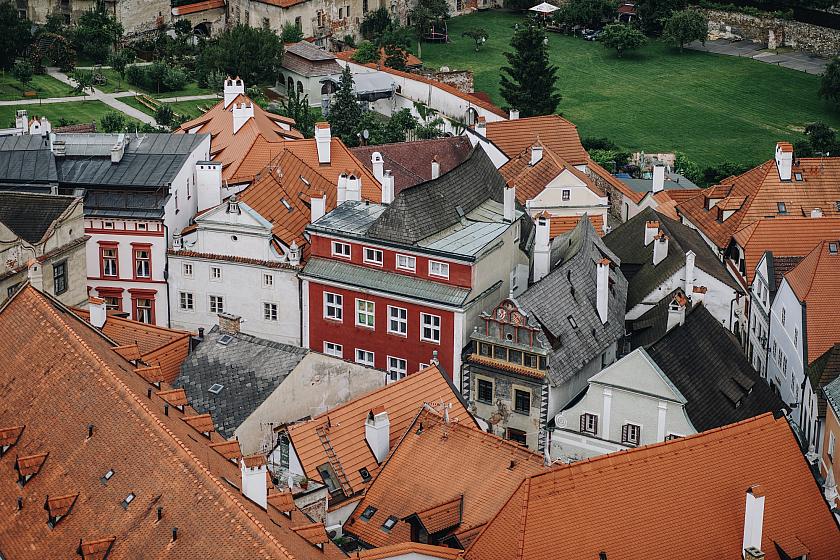Probably the busiest thoroughfare in the historical centre of Český Krumlov, Latrán is full of shops, restaurants and cafés. It connects you with the castle, monasteries, monastery and brewery gardens, and it is a short walk from Latrán to the banks of the Vltava River. The street extends from Špičák (at the level of the Luna cinema) and after about 600 m it opens onto the Lazebnický Bridge, which connects the Latrán district with the Inner Town. Our walk leads first through the most picturesque part of Latrán Street from the 1st Castle Courtyard to the Lazebnický Bridge.
Latrán is the most known street of Český Krumlov. It was first mentioned in the Rožmberk town directory from the 1470s. And what does Wikipedia say about the origin of the word? Latrán (Latin lateranus = lateral, side) usually refers to a fortified part of a town, settlement or sub-town, a sub-town, adjacent to and directly dependent on a castle or chateau.
Red Gate
We start our walk at the Red Gate, which connects Latran with the castle, specifically the first castle courtyard. It consists of a double-leaf wooden gate with a carved emblem of the Schwarzenberg family at the top. The gate is set in a brick arch, with a connecting corridor to the Minorite monastery on the floor above. The traditional red paint gave the gate its name.
Castle Apotheca
Adjacent to the Red Gate is a distinctive building with Renaissance facades with sgraffito and distinctive high gables. In 1913, a castle apothecary was established on the ground floor, which is how the house is still known today. Apotheka is, in fact, the name of the cocktail bar that is located on the ground floor. Passing the building, we take the Latran first to the right.
House with the Rosenberg Horseman
You cannot miss the Renaissance house No. 39 while walking around Latran. The sgraffito and the painting of the so-called Rosenberg Rider are the most striking. The Renaissance gable with horizontal cornices and pillars is topped with Venetian arched gables.
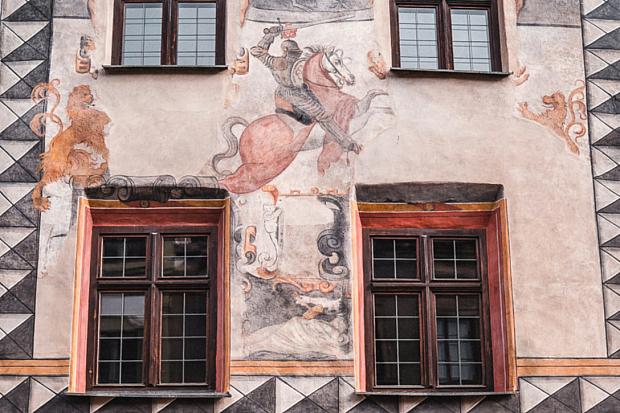
Functionalism at Latran Street
Among the Gothic and Renaissance houses, the small functionalist new building from 1936 at Latrán 13 catches the eye. It is a single-storey building with almost all glass on the street facade. In 1937, a joinery workshop was established here, and later a haberdashery operated here for many years, hence the name Švadlenka. Today it is a café.
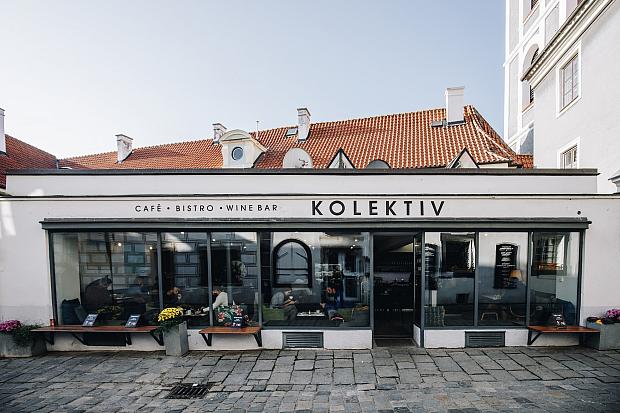
Church of St. Jošt
The history of the church at Latrán dates back to the 14th century, but it is not long. In 1787, the church was abolished and consecrated as a result of the Josephine reforms and then it housed a casino with a dance hall. Since the 20th century the building has been used for housing, with shops and restaurants. You can also visit an exhibition dedicated to the history and tradition of sailing in the Czech Republic, a tower and attic spaces with preserved Renaissance roof trusses.
Na Fortně Street
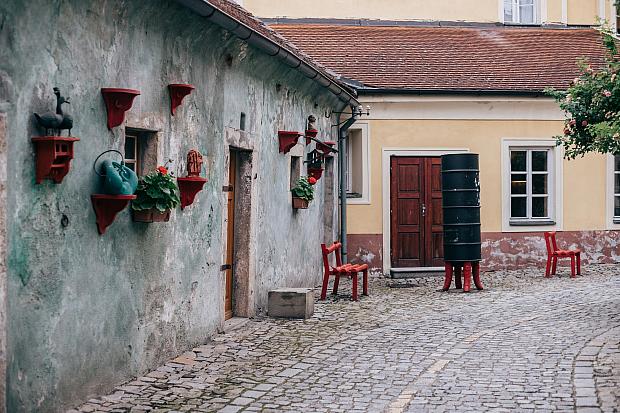
Riverbank
Na Fortně Street opens onto the Vltava River Embankment. It offers a beautiful view of the terraced houses on the opposite bank, and in the warmer months you can sit by the river, even with a drink in your hand.
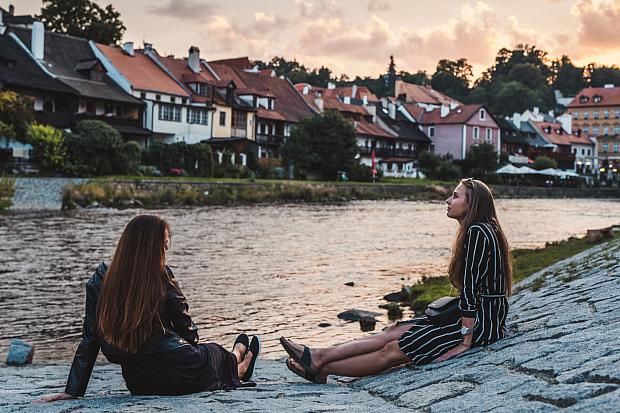
Port 1560 in the former brewery
From 29 February 2024, four brand new exhibitions await you at Port 1560: Life, Work, Art, Dreams. You will see how life used to be, how beer used to be brewed and the best of modern art.
Nové Město, Formanská and Klášterní streets
Nové Město and Formanská Streets are just a few metres from the Latrán thoroughfare, yet they are quiet and you won't see any crowds. You can walk through them quietly to Klášterní Street and from there to the courtyard of the former Minorite monastery called Tramín.
Monasteries Český Krumlov
Mix herbal teas, try your hand at writing with a goose quill, play with historical toys or see an exhibition of the best of children's illustration. Learn about the history and architecture of the unique monastery complex of the Minorites and Poor Clares. But there is much more to discover under the roof of the Krumlov monasteries.
To the Budejovice Gate
The Budějovice Gate is the only one of the nine city gates that has survived to this day. It was built in 1598-1602 by the architect Domenico Benedetto Cometta of Eckthurn.
- sights
- suitable for children
- architecture
- history
- arts
- refreshments en route
